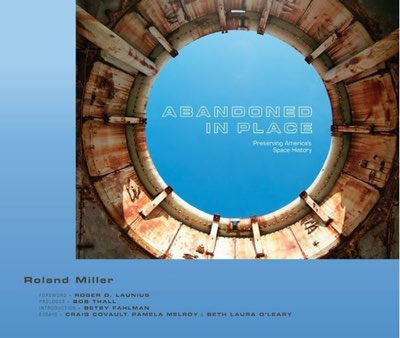Review: Abandoned in Placeby Jeff Foust
|
| “Nature has a way of reminding us of her relentless capability to reclaim these launch pads,” he writes. |
A major focus of the book is the decay of launch sites at the Cape after NASA or the Air Force decommissioned them. Particularly powerful is a pair of photos taken of the erector at Launch Complex 19, used by the Titan II during the Gemini program. The first, taken in 1991, shows the erector resting on its side, showing some rust and fading paint but otherwise looking mostly intact. The second photo, taken in 2005 from the same angle, shows much greater degradation, with pieces falling apart. (The “white room” at the end of the erector, used by astronauts to access the Gemini capsule, was removed between the two photos for restoration and display in a local museum.) The erector has since been demolished.
Such decline, he notes, is inevitable in an environment like the Cape. “Nature has a way of reminding us of her relentless capability to reclaim these launch pads,” he writes in an earlier chapter about a visit to another decommissioned launch site there. “Cape Canaveral’s abandoned sites require a consistent effort of landscape maintenance to hold back the relentless growth of Florida’s flora.”
The procession of images of decaying launch pads and equipment can be depressing, but there are some bright spots. A chapter on Launch Complexes 40 and 41, developed in the 1960s, notes that these facilities have found new life as sites for SpaceX’s Falcon 9 and United Launch Alliance’s Atlas V, respectively. Miller also recalls visiting test stands and making sure, when asking his escort for access to a higher level of the facility, to do so in earshot of NASA employees. “The inevitably interrupt and say, ‘Oh sure, you folks can go up to that level, but you should really see the very top level,’” he said. “I know that the workers will intervene, because I have never met a NASA employee who did not relish his or her job and the amazing facilities and fantastic technology with which the employees work.”
The collection of photos have only basic captions indicating the location and date, which at times can be a little disappointing when you want to learn more about what is being shown and how it got into that condition. Some of that information is provided in the book’s chapters, which also include guest contributions by several other people. Veteran space journalist Craig Covault writes about Complexes 40 and 41, former astronaut Pam Melroy recalls her visits to Complex 34, and space archaeologist Beth Laura O’Leary discusses preserving artifacts left from the Apollo missions to the Moon.
Plenty of space artifacts here on Earth are preserved for future generations in museums around the world. Preserving those artifacts left outside, like launch sites, is harder: that “consistent effort of landscape maintenance” needed at the Cape comes at a price that can be hard to pay for when budgets are tight and current programs and facilities are a higher priority. For those that can’t be physically preserved, the photos in Abandoned in Place help preserve their memories as nature reclaims their materials.
